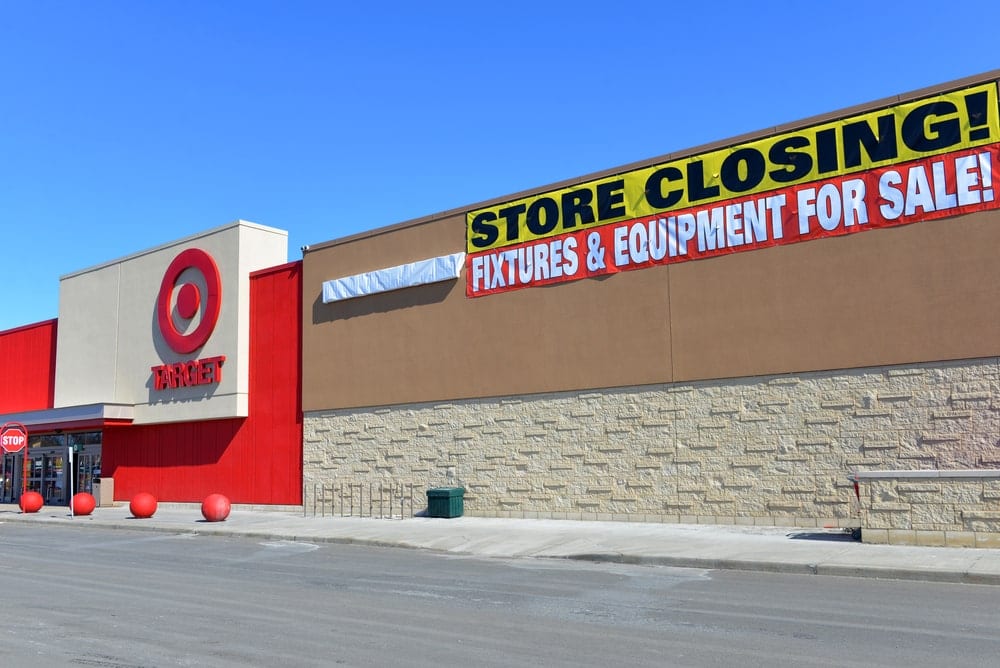Supply Chain Lessons from Target’s Calamity in Canada

For those of us in the U.S., Target's announcement that it would be shutting up shop in Canada came as something of a surprise. Supply chain lessons from the company's expansion should have been a positive example to follow, rather than a model of what not to do.
The big box retailer experiences big bucks success here in its homeland, and with Canadians extremely receptive to having the brand open its doors north of the border, the 133 stores that appeared should have been set for a bright future.
And yet after only two years in operation, Target confirmed in January that all of those operations would cease. Although some Canadians will be sad to see it go, far fewer will be surprised.
If you've ever set foot in one of Target's Canadian locations, however, the chances are you won't be all that shocked either. Why? Because, like a tri-state grocery store hours before a media-made blizzardmageddon (TM), the shelves are often stripped of everything we want.
Supply Chain Challenges in Canada
Target's Canadian misadventure will almost certainly be held up by business textbooks as an example of how operational inefficiencies and poor planning can bring down even big brands with a great reputation.
Target is well established in the U.S. as a more chic version of their big box peers - pronounce the name with a French inflection, as fans do, and you'll get the idea - and Canada has cottoned on to this. It isn't unusual for shoppers in the south of the country to hop across the border to buy at their nearest stateside store, with price and selection being top of their motivation.
On both of these counts, Target Canada failed fans after its highly anticipated arrival in 2012.
Prices tended to be higher than expected and stores regularly ran out of what customers wanted. As Denise Dahlhoff discussed in this expansive Wharton school analysis of Target's downfall, "they were stocked out, the pricing wasn’t [the same] as in the U.S., and the merchandise was different."
There are plenty of first-hand accounts of the failings Dahlhoff identifies. If you've spent any time at Target's Atlantic Terminal outpost in New York City, you'll be familiar with this feeling of slow restocking and big gaps on the shelves. The difference is that you can travel 10-20 miles in that case and find a Target store that has been adequately supplied. In Canada the supply chain shortcomings were systemic, manifesting the same issue across a majority of the country's stores, and that's when the brand begins to suffer.
As we've said before, the supply chain plays an important role in brand building. Your reputation as a retailer is only as good as the stores ability to stock what you sell, and this is where Target fell down. For those with an interest in operations and running an efficient, effective supply chain, there's a lot to learn from this particular set of mistakes.

Supply Chain Lessons from the Great White North
Here are some of the key takeaways that we've flagged from this example:
- Ensure end-to-end efficiency: Or, you're only as strong as the weakest link in your supply chain. For Target, goods got into the warehouses in good time but faced significant issues getting processed and out to the stores around Canada. The cargo was in the country, but nearly there is not near enough when it comes to satisfying customers.
- Trust (and test) your technology: Glitches in inbound delivery data and systems, such as doubled-up units of measurement, hindered the ability of Target's operations staff to manage stock intake and organize outbound deliveries to stores. Even the most advanced infrastructure and efficient operatives will struggle to manage distribution effectively if they can't track where goods are and in what quantity.
- Don't run before you walk: Rather than a slower roll out moving province-by-province, Target took advantage of the sudden availability of space previously occupied by Canadian chain Zellers. Locking itself into a rapid, coast-to-coast launch covering 133 stores was ambitious, but in the end it just magnified the chinks in their supply chain.
- Play to your strengths: The brand is generally renowned for well-priced products in well-stocked stores south of the border, thanks in no small part to an efficient distribution operation. Executives failed to extend these advantages up north, instead focusing on the set up of three new facilities in Quebec, Toronto and Calgary. In conjunction with the previous point, it was always going to be an uphill battle to hit the ground running with this new system and adequately supply so many stores from the get-go.
- Keep your customers first: As well as the pricing issues, Target failed to offer some of the more attractive modern fulfillment options, such as click & collect which allows online orders to be collected at a local store. Popular with younger customers, who would have been a key target audience for Target in Canada especially, overlooking this option gave them one more reason to abandon the brand.

Is your business facing expansion that requires a more complex supply chain set up?